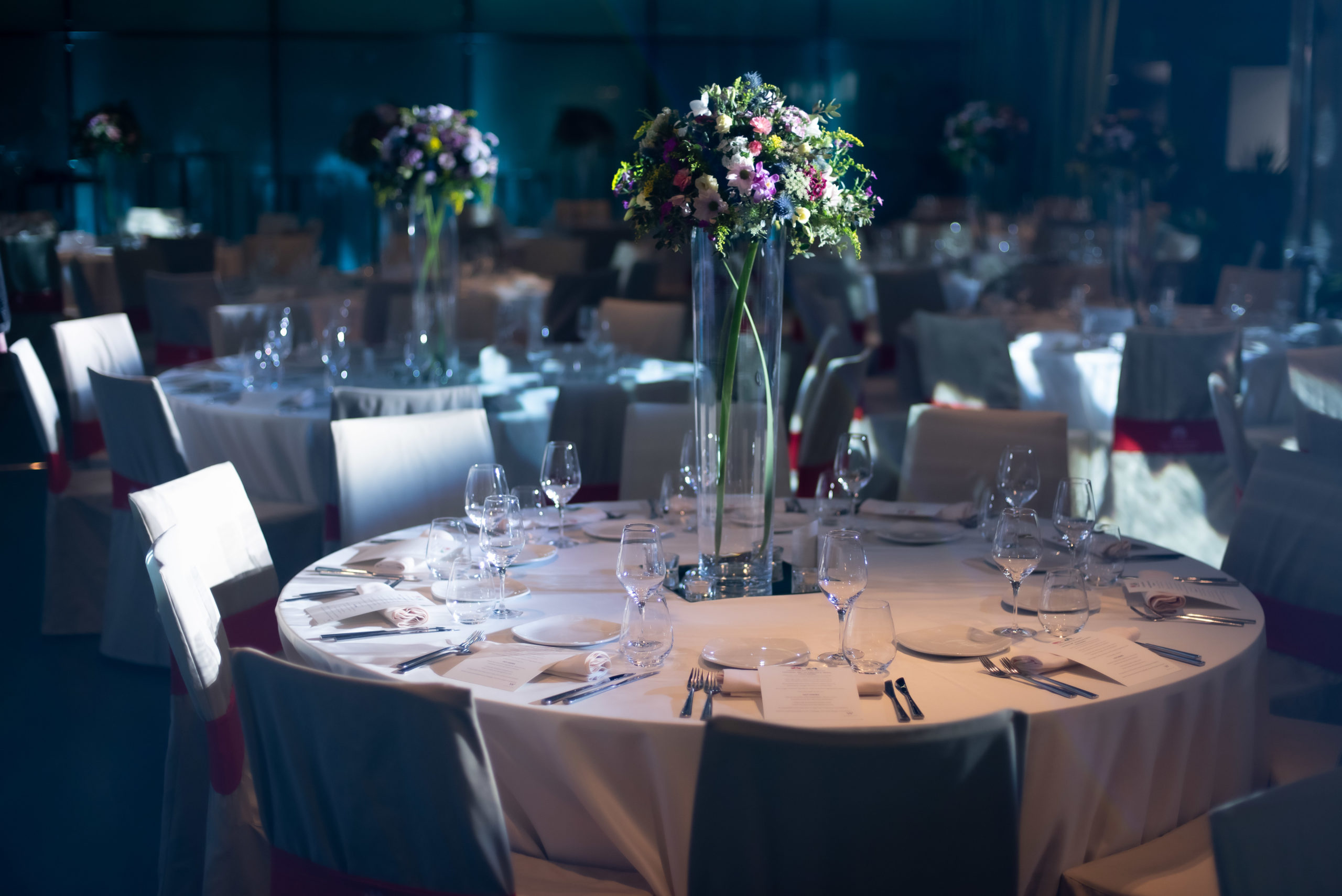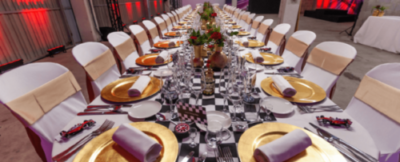How To Host A Gala Dinner
What is a Gala and What happens at a gala? It typically is an annual fundraising gala, which is a formal or semi-formal party where high-profile personalities gather for specific purposes. These purposes often include raising money for charity, supporting a project, or benefiting an organization. A grand gala typically caters to donors as its primary attendees, creating a social setting where participants can enjoy themselves, have fun and experience the most famous scenes.
Gala Dinner And Product Launch
Gala Events can be themed for products launching. It is not only for charity or fundraising. The setup of a charity gala can also be an opportunity to stage a grand celebration for a product unveiling. And since it has to do with getting specific personalities on board, a gala seems to be a great method of having a successful launch.
What Is Product Launch?
Product launch means unveiling a new product to the public, a moment of celebration for innovation. What is a gala? It is expected that such product must be one with the features and potentials of competing with already existing similar products in the industry. The purpose of launching a product can be:
- To raise money before the actual release.
- To allow certain exclusive people test the product.
- To gather in-house reviews and make improvements if possible.
What is a fundraising gala?
A fundraising gala is a glamorous, formal event that blends socializing, entertainment, and generosity to raise funds for charitable causes. These gatherings provide a platform for donors to connect, bid in auctions, and make contributions, all while celebrating the spirit of giving.
Is a fundraising gala right for you?
Are you considering hosting a gala fundraiser event but unsure if a gala is the right fit? Fundraising galas are ideal for organizations seeking a glamorous, high-profile fundraiser. They offer a chance to engage donors, showcase your mission, and raise substantial funds. However, they also demand significant planning, resources, and a strong network. So, whether a gala is right for you depends on your organization’s goals, budget, and capacity to organize a memorable, successful event.
Tailoring your gala event to your audience
Tailoring your gala or gala charity event to your audience is the key to success. Understanding your attendees’ preferences, interests, and expectations allows you to create a more engaging and memorable experience. Whether it’s a formal affair, a themed party, or an intimate gathering, customizing your gala ensures that your guests feel connected to your cause.
Should you call your fundraising gala a gala?
When it comes to naming your fundraising event, the term “gala” might seem like the obvious choice. But is it the right one for you or is the term non profit gala more suitable? Deciding whether to label your fundraising event as a “gala” depends on closely defining “What are galas” and factors like event scale, target audience, fundraising goals, and budget. Also it is important to remind yourself of the question “What is a gala”.If you’re aiming for a high-end, prestigious affair with upscale attendees, the term can be fitting. However, it’s important to ensure your event lives up to the expectations set by the term. Consider your organization’s objectives and resources, and, if needed, explore alternative event names that better match your goals and audience.
How To Host A fundraising gala
Planning a gala occasion for a product launch is a complex undertaking, but can be highly rewarding. There are crucial steps and ideas to consider if one desires a successful launch. Below is a breakdown of essential ideas that should be implemented for a gala focused on product launch.
· Establish The Purpose
This is perhaps the first idea a gala organizer must consider when it comes to planning an event for a gala occasion. What is the idea behind wanting to host a gala? In this case, the answer is for product unveiling and creating one of the most famous scenes. When the purpose is clear, then other ideas on how to organize a gala for product launch will fall in place, leading to a well-planned celebration.
· Set Gala Dinner Goals
Another essential consideration to make is the goals of the product reveal or fundraiser gala. Here, it is expected that the organizer should highlight extensively what they want to achieve from the product or products launching. Sometimes, the goals are beyond just gathering money from invitees. Another goal may be to make all the attendants ambassadors of the product. This is a great marketing idea that has a long-term effect. It can also potentially bring more sales than the amount that can be recorded from the launching.
· Analyze The Costs And Financial Implications
Part of the product launching plans for the gala must be the budget. No one wants to spend more than they can recover either in ticket sales or launched product income. Organizers should create a budget that details the event planning expenses so they can manage funds. Budget allows event planning to be clear as organizers can only spend on priorities. As a result, one should take their time to list what they need and the amount they want to spend.
· Choose A Ticket Price
As part of the products launch ideas, setting a ticket price is a great idea. For product launching gala, there is no need to have multiple ticket prices for different categories. All attendees should be considered equal and important. The ticket price does not have to be high because the organizer needs the attendees to spend on the product later. A ticket pricing system makes the gala looks exclusive. Branded personalized or customized ticket can also be used.
· Set Up Ticket Sales Method
Organizers do not want to frustrate attendees during the registration process. Simplifying the ticket purchase system is very important. It is advisable to set up a ticket sales system that is easy, fast, and convenient, enhancing the overall celebration experience. This helps attendees a lot and also makes registration faster. In many cases, ticket sales might skyrocket if the process is super easy and fast. An online ticket sales method can work as long as the process is quick. Multiple options should be tested.
· Furnish The Public With Your Brand’s Accomplishment
Organizers must impress the audience before the launching. One way to do this is to share the brand’s progress and accomplishment during the event. The invitees are likely to give more if they are impressed with the brand.
· Allow For Networking
What do you do at a gala? Gala events are not complete without a chance to network. Therefore one must allow the space and time for invitees to meet one another and acquaint.
Conclusion
A gala event is an ideal event every organizer should consider whether it’s for charity, fundraising, project execution, or product unveiling. Not to worry about the stress of planning and management, SmartWorks helps to achieve any gala goals.
SmartWorks offers a complete spectrum of events management that covers:
- Staff for all kinds of events (hostess, models, security, basic hands)
- Venue selection
- Off-site private gala dinner venue, restaurant selection, and management
- Activity creation & management – leisure, cultural, team-building
- Catering management
- Transfer & Logistics management
- Incentives
- Latest AV solutions
- Gala performances management
- Special decoration design, and entertainment for all venues
- VIP guests & motivational speakers
- Exhibition design & Production
- Housing & Registration
FAQ
What is a Fundraising Gala?
Read more
A fundraising gala, often simply referred to as a gala, is a formal social event organized with the primary goal of raising funds for a specific cause, organization, charity, or project. Galas are typically elegant and high-profile affairs that bring together donors, supporters, and potential benefactors to solicit financial contributions. These events are commonly used by nonprofit organizations, charities, educational institutions, and other groups to secure financial support for their activities.
Fundraising galas typically feature the following elements:
- Venue: They are often held at upscale venues such as hotels, banquet halls, or cultural institutions. The choice of venue contributes to the overall ambiance and sophistication of the event.
- Ticket Sales: Attendees purchase tickets to gain entry to the gala. Ticket prices can vary widely, and some events may offer different levels of tickets with varying privileges and access.
- Formal Dress Code: Attendees are usually expected to dress formally, in evening wear or black-tie attire, to enhance the sense of occasion.
- Entertainment: Galas often include entertainment elements such as live music, performances, guest speakers, and sometimes auctions or raffles to generate additional funds.
- Dining: A formal dinner or banquet is a common part of a gala, where guests enjoy a multi-course meal and beverages. This adds to the social and luxurious nature of the event.
- Fundraising Activities: The primary purpose of the gala is to raise funds, so there are various fundraising activities throughout the event. This can include direct appeals, silent auctions, live auctions, and donation requests made by organizers or prominent guests.
- Networking: Galas provide an excellent opportunity for attendees to network with like-minded individuals, potential donors, and key figures in the organization.
- Recognition: Donors and supporters are often acknowledged and recognized during the event, which can include awards or other forms of public recognition.
- Theme and Decor: Some galas have specific themes or decorative elements that help create a unique and memorable atmosphere.
Fundraising galas are a popular method for raising significant amounts of money for charitable causes, as they leverage the appeal of an elegant, memorable event to inspire generosity among attendees. The success of a gala often depends on effective planning, marketing, and the ability to engage and motivate the attendees to contribute to the cause.
show less


